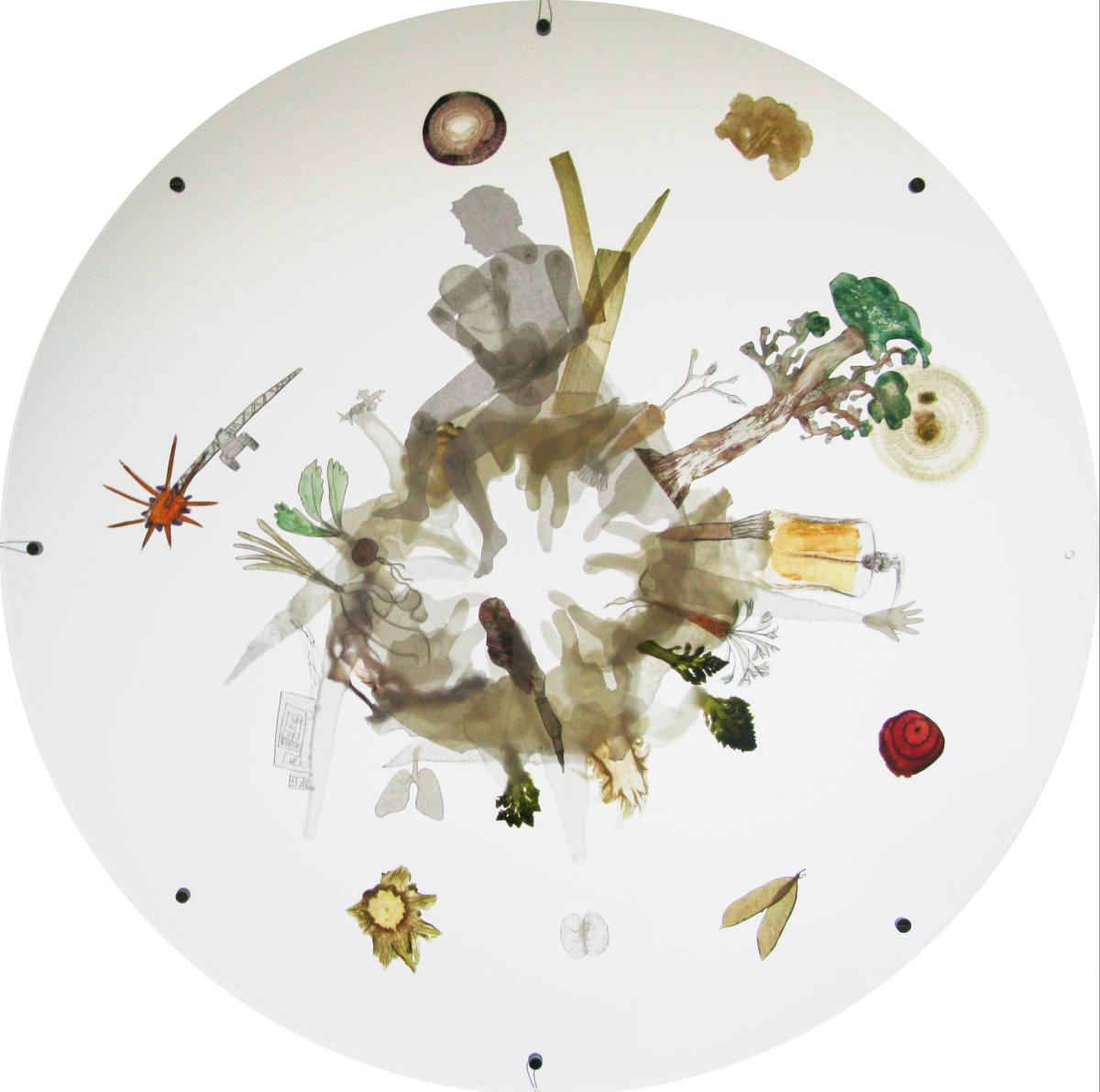
My days are spent experimenting with visuals in the studio and exploring scientific/health research ... A few days each term I work as a physiotherapist at a school for Deaf children in London. I also support a young person in my family who recently developed a couple of autoimmune diseases. It was this event that inspired my interest in the role of gut microbes in our health.
What have you been doing today?
I have been sorting through the hundreds of Hopes for Health drawings made by the public at my Art of the Gut exhibition at Norwich Science Festival. Visitors made rubbings using beautiful panels, hand-made for me by sculptor Chris Jackson. These depict stylised body parts which refer to the latest research in gut microbes and health from the Quadram Institute, where I am artist in residence.
Hang your Hopes on the Microbes is inspired by the idea that the trillions of commensal or 'good' microbes in our intestines can improve our health and also draws on ancient traditions of displaying votive offerings at sacred/special places. These were personal messages, carvings or images which were used to seek strength or health.
The meditative act of making a rubbing was described as calming by teenagers visiting the Science Festival. Parents fatigued by the hectic festival, sat and read about the research or talked to scientists while their younger children created images and hung them on the wiry hairs of a giant microbe. This tall capsule shape was filled with beautiful vegetable papyrus, translucent and delicate, suggesting the variety of veg and fruit that we need to eat to maintain a healthy microbiome. The project was funded by Norfolk County Council with Lottery funding from Arts Council England, you can follow it on Twitter or Instagram, #artofthegut.
Today I am planning my next meetings to learn more about this research and to make links with other institutions in Norwich Research Park. One recent contact is the Norfolk Arthritis Registry who have been researching Rheumatoid Arthritis (RA) for 30 years. At their public birthday celebrations I made visual records of visitor's health stories on my specially designed Rheumatology body charts. I also commissioned artist Rach Anesty-Sanders to assist the public to make felt microbes.
I love to provide therapeutic activities which lead to an intriguing installation while enabling the sharing of knowledge between groups such as patients/clinicians, families and research scientists.
Is that a typical day for you?
My days are spent experimenting with visuals in the studio and exploring scientific/health research. I moved to Norwich from London three years ago so am still making new connections with local artists to collaborate with, this is often through the events for associate artists at the Sainsbury Centre of Visual Arts.
A few days each term I work as a physiotherapist at a school for Deaf children in London. I also support a young person in my family who recently developed a couple of autoimmune diseases. It was this event that inspired my interest in the role of gut microbes in our health.
When did you start working with culture, health and wellbeing, and how?
My dual roles as a physiotherapist and an artist came together after my MA in the late 1990s. I was interested to see how the drawings of the children I worked with as a physiotherapist, revealed their difficulties in visual and spatial perception. I started working with the wonderful educator, the late Ken Baynes, who linked me to Loughborough University's virtual reality department. This led to Memory Island, a virtual fly-through of the lives of people with cerebral palsy, created for Camden Arts Centre in 2004.
Wellcome kindly contributed to that exhibition and funded a few more of my projects with London hospitals, including The Royal Brompton. Here I created an installation and a live shadow show exploring the experiences of people with cystic fibrosis, the music was created by Victoria Hume!
Later projects have included work with the National Trust, Olympic Heritage, Ignite, Wellcome, Newcastle Institute of Ageing and Health and The Natural History Museum as well as a personal film about breast cancer which toured with Transitional States.
What was the last project you came across that inspired you?
I have to mention and thank Jenni Rant of the SAW Trust who inspired me and helped me with this project. Science Art and Writing enable school students and others to connect to scientists and artists through exciting workshops.
I have also been impressed by Eyebrow Arts who work in care homes and day centres in East Anglia, providing extraordinary multi-sensory experiences and narratives for people with dementia. They developed ideas at a day centre that my father attended. It comforts me to think of him enjoying these creative events while he was living with dementia.
Jennie Pedley is currently artist in residence at the new Quadram Institute, which studies how our microbes and our food interact to promote health and prevent disease. This cutting edge research could change the face of health care in the future. Jennie is a physiotherapist as well as a visual artist and much of her work explores issues of health of the body and of the environment. Her films and installations have been inspired by topics such as ageing, our relationship with wildlife, breast cancer and the stories and perceptions of people with conditions such as cerebral palsy and cystic fibrosis. Jennie is one of the workshop leaders/ affiliated artists at the Sainsbury Cenre for Visual Arts. She has worked with Wellcome, the National Trust, many major London hospitals, Olympic Legacy and the Natural History Museum. Jennie has have exhibited widely, showing work often co-created with the public, patients, scientists and other artists. Jennie works in both London and Norwich, where she is now based.
